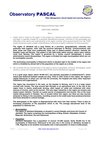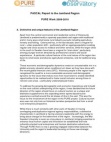Jämtland Region, Sweden
The region of Jämtland has a long history as a province, geographically, culturally, and politically held together. Until 1645 the province belonged to Norway. Communications with other areas and trade have traditionally taken part in eastern-western direction, towards the Swedish coast and Norway. This pattern is still valid today within tourism, where many visitors come from Norway. The region is governed by a county council (landstinget), a county administrative board (länsstyrelse). The region is divided into eight municipalities which are run by municipality councils.
The dominating municipality is Östersund which is situated right in the middle of the region and which is inhabited by almost half of the population of the region as a whole.
It is a quite large region (about 49 000 km2), but sparsely populated (3 inhabitants/km2), which means that distances between people are long. There is clear centre in this region, the region’s capital Östersund, in which you can find the university, the hospital and many other important institutions and organisations.
The region has mountains in the west, on the boarder to Norway, and it is to a large extent covered with forests. The area around lake Storsjön is an agricultural area, in the rest of the region there is mainly small-scale farming, often based on cattle and combined with other sources of income, such as the tourism. The only major industries in the region are forestry and (water) power industry. Tourism is a great source of employment and income. One of the most visited skiing-resorts in Sweden, Åre, is located within this region, but there are also tourists attracted to hiking in the mountains, travelling around to the small-scale food producers/farmers and those attracted to cultural heritage.
The demography of the region is disproportional with more men than women. There is also an increasing proportion of the population which is old. The average educational level of the population is relatively low.
 Printer-friendly version
Printer-friendly version- 159 reads











